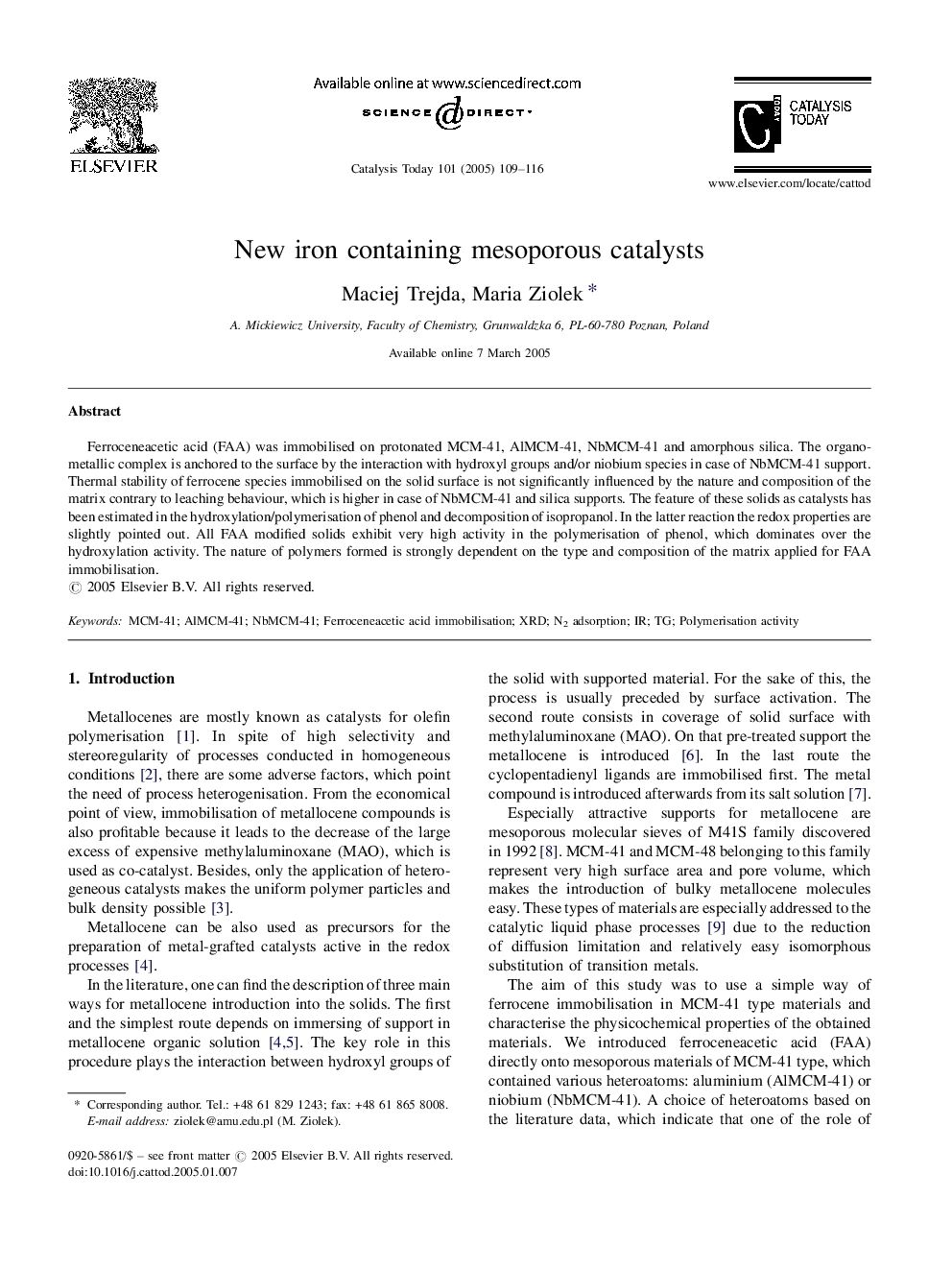| Article ID | Journal | Published Year | Pages | File Type |
|---|---|---|---|---|
| 10243949 | Catalysis Today | 2005 | 8 Pages |
Abstract
Ferroceneacetic acid (FAA) was immobilised on protonated MCM-41, AlMCM-41, NbMCM-41 and amorphous silica. The organometallic complex is anchored to the surface by the interaction with hydroxyl groups and/or niobium species in case of NbMCM-41 support. Thermal stability of ferrocene species immobilised on the solid surface is not significantly influenced by the nature and composition of the matrix contrary to leaching behaviour, which is higher in case of NbMCM-41 and silica supports. The feature of these solids as catalysts has been estimated in the hydroxylation/polymerisation of phenol and decomposition of isopropanol. In the latter reaction the redox properties are slightly pointed out. All FAA modified solids exhibit very high activity in the polymerisation of phenol, which dominates over the hydroxylation activity. The nature of polymers formed is strongly dependent on the type and composition of the matrix applied for FAA immobilisation.
Related Topics
Physical Sciences and Engineering
Chemical Engineering
Catalysis
Authors
Maciej Trejda, Maria Ziolek,
